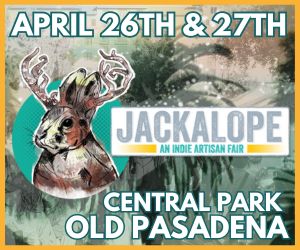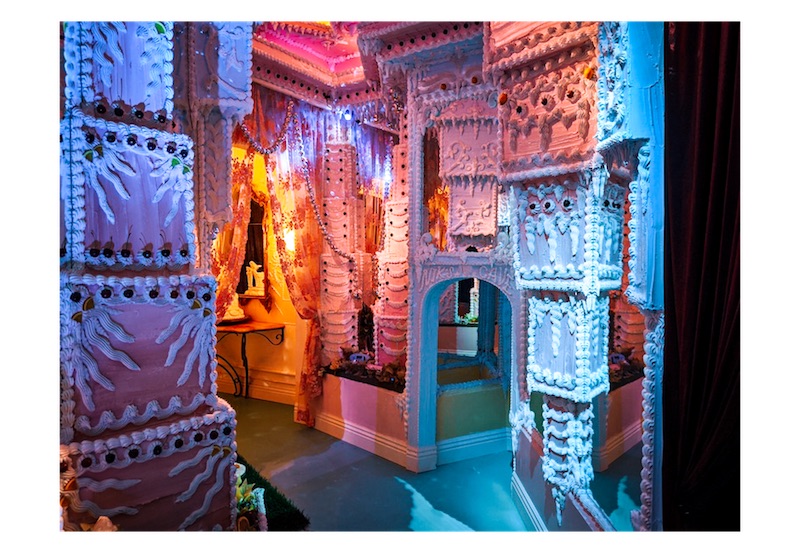
In July of 2020, everything is cake. Except the art at Cakeland LA in Chinatown, which looks like cake, but is actually made of acrylic and polyfoam.
Artist Scott Hove’s cake mazes are something you may have seen before, perhaps at Think Tank Gallery’s Break Bread show in downtown L.A. in 2016. Or maybe even earlier—he’s been creating cake-themed installations since 2005. Cakeland LA is Hove’s solo gallery and its exhibit, “The Beauty War,” is an even larger cake labyrinth than its predecessors.
Why cake?
“Cake is emotionally accessible and people are ingrained with a really positive experience for what it represents,” Hove said.
Hove’s earlier, more intense art hadn’t clicked with people the way his pale pink cakes—festooned with white icing, plump cherries, and the occasional dagger—do. Through the saccharine, he can subvert darker messages and, he said, it’s still relatable.
For example, “The Beauty War” represents the stages of life. You enter through a moon gate that represents birth, then move into a dark ice cave that reflects “the independence of getting thrown out into the wilderness and the fear and uncertainly of having to figure it out.”
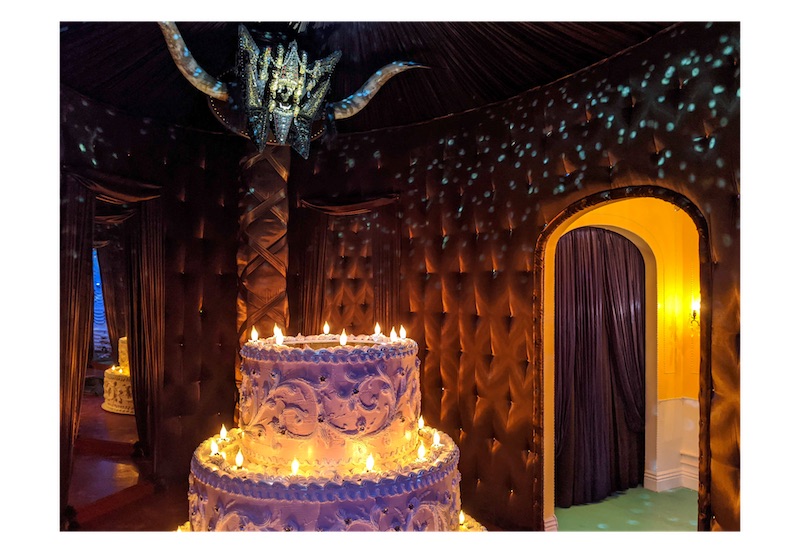
Other areas are lighter, like a pastel hallway that leads to an elliptical room with a giant layer cake in the center, surrounded by mirrors. Hove said the room was inspired by the women’s powder room in the Los Angeles Theatre. The mirrors create a surreal sensation of what’s real and what isn’t, and there’s at least one alcove you can step inside.
You can also step into the Hell Pit, the darkness that always hides in the light. It features disembodied hands grasping for freedom, while speakers continually play music from a black metal noise band.
For Hove, there seems to always be this balance of light and dark, of life and death, of cake and rot, but guests are invited to make their own inferences as to what each area means.
“I have basic, guiding archetype stories that people can relate to. But after that, I just want to shut up and let people have their own experience. It doesn’t help the art for me to impose my own interpretation of what an individual’s experience should be. Who needs that?” Hove said.
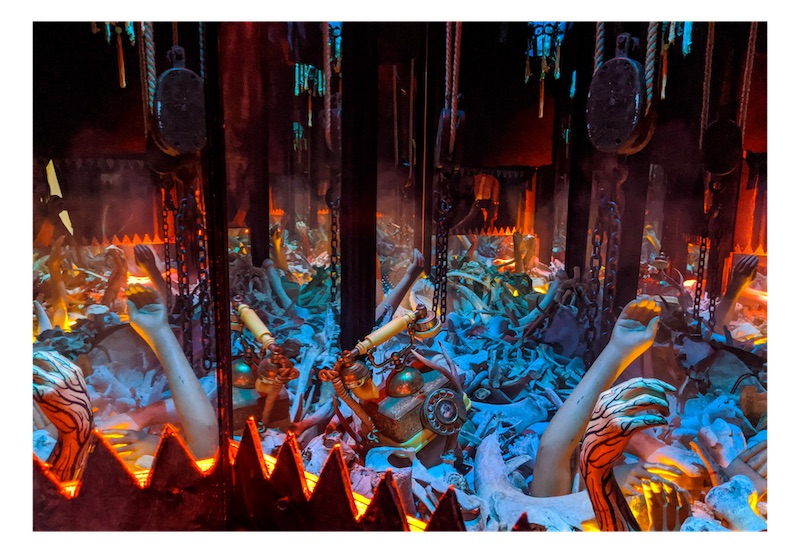
Though cake plays a large role in the art, “The Beauty War” isn’t a food-themed Instagram factory, the way previous homages to dumplings, tacos, and pizza have been. It’s photo-friendly, but the point isn’t to move from room to room, posing in sets and snapping photos. In fact, Hove’s not a fan of those kinds of things. He noted how after the Museum of Ice Cream opened in 2016, it felt like each future iteration was a cheaper knock-off of the one that came before.
“I was really upset that such a potentially exciting artform was getting diluted by a bunch of non-artist capitalist types,” he said. “It was like this commerce-driven thing, completely taken over by the wrong people. So you’re given this supposed art experience where they forgot the art. ‘Good vibes only,’ which is also bullshit because the darkness starts coming out through the cracks in the form of unhappy employees and bad lighting.”
As someone who’s covered “immersive” art for several years, I wouldn’t argue. Some walkthrough installations offer a narrative and others are truly inventive. But by the time you’re headed to your dozenth chicken fingers-themed or egg-themed pop-up (yes, those were real things), you can start to see how shoddy and soulless the work is, how much each room is actually a large advertisement you’re supposed to hashtag and share. The aforementioned Think Tank Gallery hosted a pizza-themed parody of the trend last year, which included some artists who had poor experiences working with these so-called selfie palaces in the past.
“They’re a great return on investment for the people who threw down money for the installation, but after that, what do you have? You don’t have art, you just had a branding experience,” Hove said.
Or, maybe it used to be a great investment before COVID-19. What’ll happen to interactive installations is anyone’s guess. Without the ability to pack people in venues or lines to enter venues, the cash grab is gone. Now, only appointment-based shows, like “The Beauty War,” are an option.
Hove had planned to hold his grand opening on March 20. The Stay at Home order went into effect statewide on March 19. So, suffice it to say, that didn’t happen. His grand opening party was him, his dog Kona, and a bottle of mezcal.
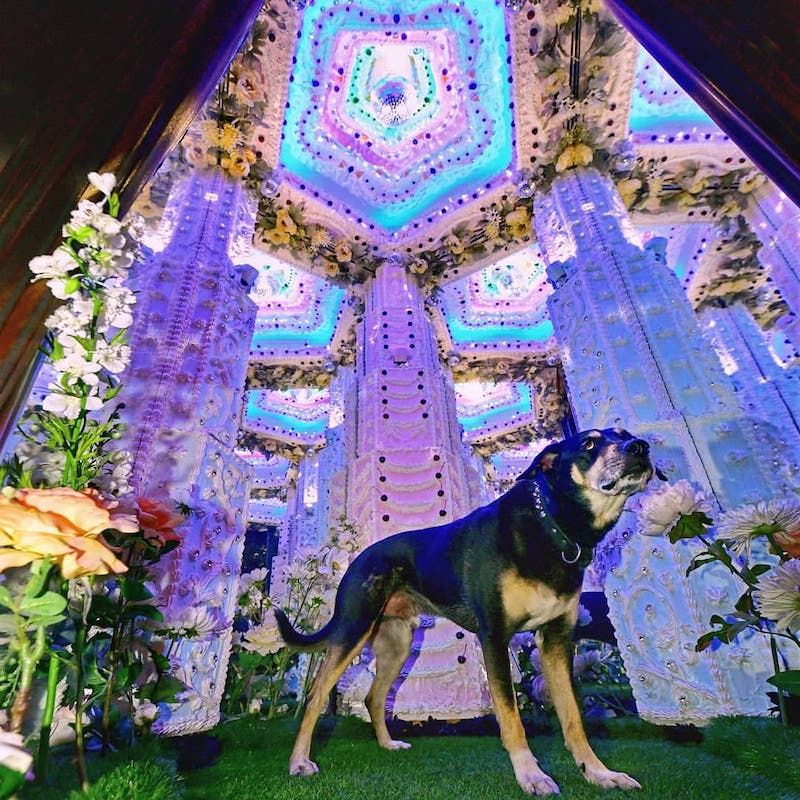
Hove still drove to his gallery every day to work on his art, weaving in additional context as the pandemic continued and protests spread across the nation. The strange times added context and now, Hove thinks the work is better than it would have been had he opened in March.
“Now with this extra time, it’s just so much more beautiful and more satisfying for me,” he said.
You can see the results of Hove’s endless tinkering when you slow down and let yourself sink into the space. The longer you look, the more there is to see, the intricacies building atop one another. You might find a hole in a wall of “cake” where inside a small scene unfolds. You might catch an odd assemblage lighting fixture, a hidden cave, or seemingly endless layers of cake disappearing into the ceiling.
And Hove’s work on “The Beauty War” may never actually be done.
“I’m never totally satisfied with how things are. It’ll be a work ongoing, a piece in progress,” he said.
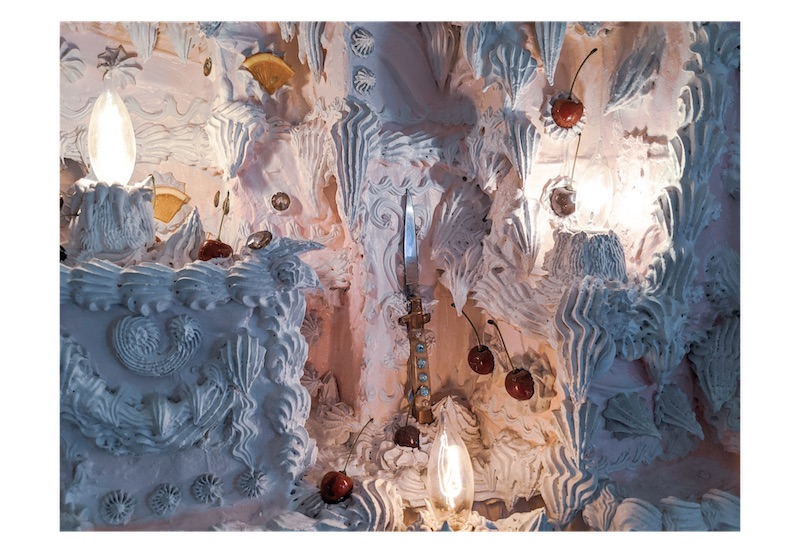
Cakeland LA is located at 936 Mei Ling Way in Chinatown. The Beauty War is on display, Weds.-Sun., through December 31. General admission is $20. During COVID_19, you must book an appointment in advance. Upon arrival, you’ll receive a temperature screening and disposable gloves. Hove uses a disinfecting ethanol spray between guests. And don’t forget your mask!
Juliet Bennett Rylah is the Editor in Chief of We Like L.A. Before that, she was a senior editor with LAist and a freelancer for outlets including The Hollywood Reporter, Playboy, Los Angeles Magazine, IGN, Nerdist, Thrillist, Vice, and others.



